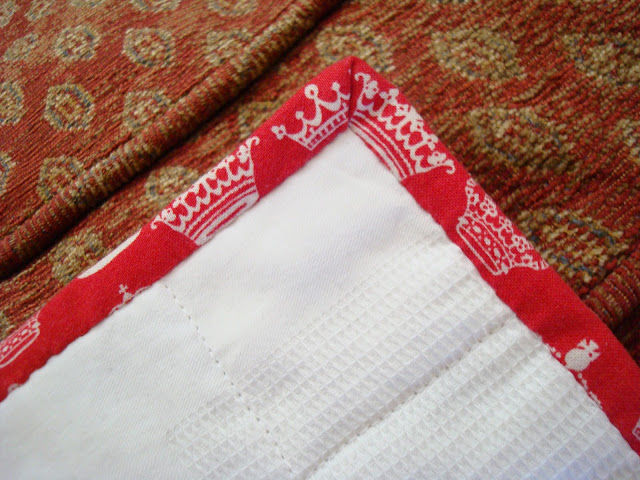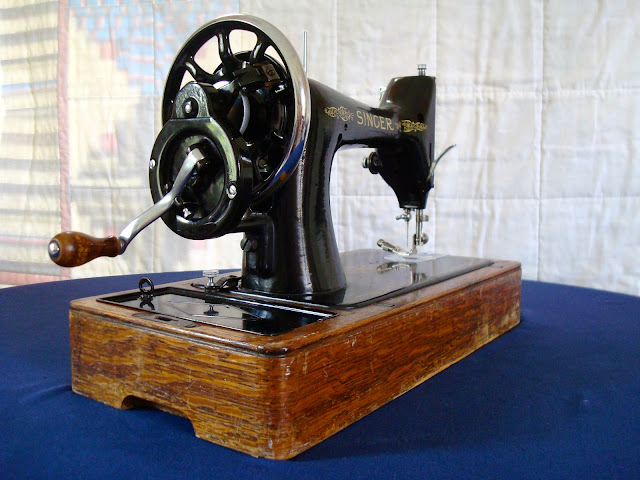Last night I pre-washed the fabric I bought for this project back in March. It was all dry by the time I got home this evening and ready to be ironed.
With the fabric ironed I got to work with the rotary cutter. I didn't set out to do all my cutting in one go but I had no idea how quickly this would go when working with new yardage and a new cutting disc. To date my patch work has all been put together from repurposed garments or left overs from other projects. This has meant dealing with irregular shapes and a certain amount of patch by patch cutting. New fabric is regular in shape, easy to fold and it took no time to cut eight, two and a half inch, cross-width strips from each fabric. I then cut a further six wider strips from two of the fabrics. These will form narrow and wider borders. The binding will be made of the third (yellow) fabric.
 |
Don't the cut fabrics look satisfying all laid out and ready to go? |
The brand new spool of natural coloured Gutermann's sew all was too much for me to resist so I got to work filling a bobbin. I have decided, as this project begins with sewing strip sets, to use the 201k to piece this project. The large level working space provided by the cabinet will be useful.
Filling bobbins is a task I always enjoy and never more so than on my 201k. The rubber tyre is nearly new so the winder fills bobbins a treat! This is where I intended to stop for the evening but all that lovely cut fabric was just too tempting.
So here it is - the first strip set I have sewn and pressed. The ironing board cover is new. I bought it off the peg but had to do major surgery yesterday afternoon to make it fit my tiny ironing board.






















